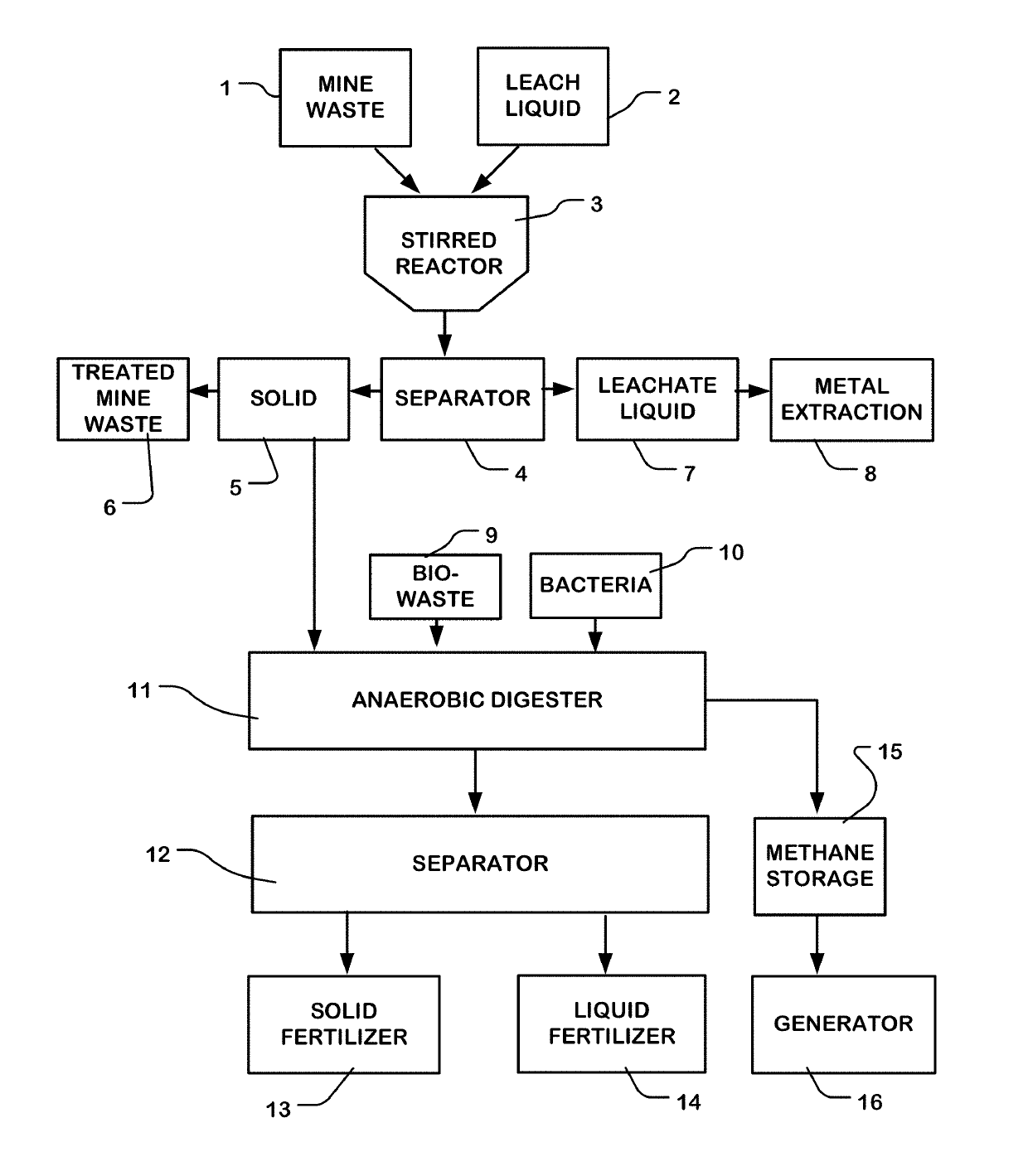Mine waste source for bio-mineral fertilizer to remineralize agricultural soil
a bio-mineral fertilizer and agricultural soil technology, applied in the direction of application, potassium fertiliser, soil conditioning composition, etc., can solve the problems of limited rock powder supply, decreased crop yield on existing farmlands, and dormantness
- Summary
- Abstract
- Description
- Claims
- Application Information
AI Technical Summary
Benefits of technology
Problems solved by technology
Method used
Image
Examples
example 1
Plant Nutrient Content of Mine Waste
[0049]In Example 1, it is shown that the chemical composition of mine waste is the same as that of commercial rock powder. The data in Table 1 compares the main elements determined in samples of mine waste (tailings) and raw ore from various sources with a similar analysis of Min Plus, a commercially available rock powder product. The weight percentages reported in Table 1 are based on energy dispersive X-ray (EDX) element analysis of particles of mine waste and ore particles examined at high magnification in a scanning electron microscope (SEM) and also element determination by inductively coupled plasma spectroscopy of liquid from acid-digested ore particles. The composition of Min Plus rock powder listed in Table 1 is taken from chemical analysis reports published by Pacific Mineral Developments of Australia, producer of Min Plus soil conditioner and remineralizer.
[0050]In general, there is a close match between the composition of mine waste an...
example 2
[0054]As shown in Example 1, Table 1, column NV1, mine waste from Virginia City NV contains a detectable amount of mercury. Accordingly, processes described herein address the removal of mercury from tailings found in the area of Virginia City, NV and similar ore locations in order to qualify the mine waste for use as rock powder in agricultural applications. Mercury is undesirable as a component of fertilizer and is known to form toxic water soluble methylmercury compounds.
[0055]In the history of the Virginia City, NV area, from 1850 onward, mining was principally for silver and gold. However, process waste accumulated for over 100 years of mining contains a residue of mercury which was a key ingredient in pan amalgamation, the gold and silver recovery process used in Virginia City. In each pan vessel, 1500 pounds of ore particles were ground together with 70 pounds of mercury plus other chemicals to form a silver-mercury amalgam. (As determined in our research, about ⅔ of a pound ...
example 3
[0057]To verify the mercury leaching described in Example 2, similar Virginia City mine waste (process tailings) was leached as a stirred slurry comprised of 210 grams of powdered tailings, 45 grams sodium thiosulfate, 2 grams copper sulfate pentahydrate and 1.8 liters if water. The slurry was stirred for one hour at a temperature of 25.6° C. Initial mercury content of the tailings was determined by inductively coupled plasma (ICP) spectroscopy of liquid obtained by aqua regia digestion of a tailings sample. The concentration of mercury remaining in the residue of the leached slurry was determined by ICP analysis of liquid from aqua regia digestion of a residue sample, well-rinsed with deionized water and dried. Comparison of mercury remaining in the residue of the leached tailings with the initial mercury content of said tailings showed a mercury extraction efficiency of 85.8 percent.
PUM
| Property | Measurement | Unit |
|---|---|---|
| particle size | aaaaa | aaaaa |
| particle size | aaaaa | aaaaa |
| particle size | aaaaa | aaaaa |
Abstract
Description
Claims
Application Information
 Login to View More
Login to View More - R&D Engineer
- R&D Manager
- IP Professional
- Industry Leading Data Capabilities
- Powerful AI technology
- Patent DNA Extraction
Browse by: Latest US Patents, China's latest patents, Technical Efficacy Thesaurus, Application Domain, Technology Topic, Popular Technical Reports.
© 2024 PatSnap. All rights reserved.Legal|Privacy policy|Modern Slavery Act Transparency Statement|Sitemap|About US| Contact US: help@patsnap.com








